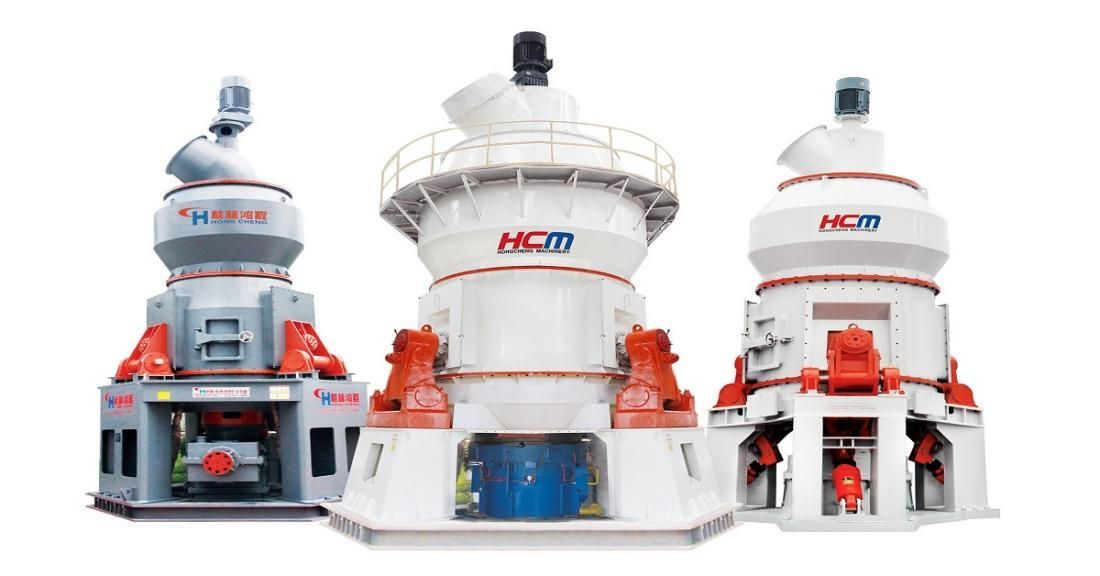1. Suitable material layer thickness
The vertical mill works on the principle of material bed crushing. A stable material bed is the prerequisite for the continuous and stable operation of the vertical mill. If the material layer is too thick, the grinding efficiency will be low; if the material layer is too thin, it will easily cause vibration of the mill. In the early use of the roller sleeve and grinding disc lining, the thickness of the material layer is controlled at about 130mm, which can form a stable material layer and control the load of the vertical mill main machine to fluctuate within a reasonable range;
When the use of vertical mill roller sleeves and lining plates has passed the running-in period, the thickness of the material layer should be appropriately increased by about 10mm, so that the material layer is more stable, can exert the best grinding effect, and increase the hourly output; the roller sleeves and lining plates wear in the later stage , the thickness of the material layer should be controlled at 150~160mm, because the material layer is unevenly distributed in the later stage of wear, the grinding effect is poor, the stability of the material layer is poor, and the phenomenon of hitting the mechanical positioning pin will occur. Therefore, the height of the retaining ring should be adjusted in time according to the wear of the vertical mill roller sleeve and lining plate to control a reasonable material layer thickness.
During the central control operation, the thickness of the material layer can be judged by observing changes in parameters such as pressure difference, host current, mill vibration, grinding outlet temperature, and slag discharge bucket current, and a stable material bed can be controlled by adjusting feeding, grinding pressure, wind speed, etc. , and make corresponding adjustments: increase the grinding pressure, increase the fine powder material, and the material layer becomes thinner; decrease the grinding pressure, and the grinding disc material becomes coarser, and accordingly the slagging material becomes more, and the material layer becomes thicker; the wind speed in the mill increases, and the material layer becomes thicker. Circulation makes the material layer thicker; reducing wind reduces internal circulation and the material layer becomes thinner. In addition, the comprehensive moisture content of the grinding materials should be controlled at 2% to 5%. The materials are too dry and too fine to have good fluidity and are difficult to form a stable material layer. At this time, the height of the retaining ring should be appropriately increased, the grinding pressure should be reduced, or the grinding pressure should be reduced. Water is sprayed inside (2%~3%) to reduce material fluidity and stabilize the material layer.
If the material is too wet, the batching station, belt scale, air lock valve, etc. will become empty, stuck, blocked, etc., which will affect the stable operation of the mill, thereby affecting the station time. Combining the above factors, controlling a stable and reasonable material layer, maintaining a slightly higher mill outlet temperature and pressure difference, and increasing good material circulation are good operating methods to increase production and save energy. The outlet temperature of the first-stage mill is generally controlled at 95-100℃, which is relatively stable, and the pressure difference is generally around 6000-6200Pa, which is stable and highly productive; the outlet temperature of the second-stage mill is generally controlled at around 78-86℃, which is relatively stable, and the pressure difference is generally between 6800-7200Pa. Stable and productive.
2. Control reasonable wind speed
The vertical mill is a wind-swept mill, which mainly relies on airflow to circulate and transport materials, and the amount of ventilation must be appropriate. If the air volume is insufficient, qualified raw materials cannot be brought out in time, the material layer will thicken, the slag discharge volume will increase, the equipment load will be high, and the output will decrease; if the air volume is too large, the material layer will be too thin, which will affect the stable operation of the mill and increase the power consumption of the fan. , therefore, the mill ventilation volume must match the output. The air volume of the vertical mill can be adjusted through the fan speed, fan baffle opening, etc.For the latest quotation, please contact HCM Machinery(https://www.hc-mill.com/#page01) by email:hcmkt@hcmillng.com
Post time: Oct-31-2023









